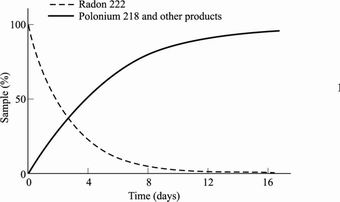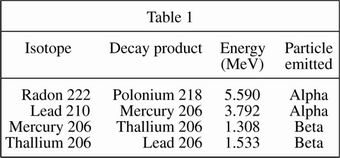
ACT Science Practice Test 51
Đề thi nằm trong bộ sưu tập: Tuyển Tập Bộ Đề Thi Đại Học Hoa Kỳ (ACT) - Có Đáp Án Chi Tiết
Số câu hỏi: 13 câuSố mã đề: 1 đềThời gian: 1 giờ
217,219 lượt xem 16,704 lượt làm bài
Xem trước nội dung:
PASSAGE II
The Earth's magnetic field is one of the planet's most significant natural phenomena. For centuries, the field has been used to aid navigation and exploration, and has been vital to many major discoveries. The magnetic field of the Earth extends several thousands of miles into space. It has the effect of shielding the Earth from solar wind, protecting the planet from dangerous high-energy particles and radiation. The exact source of the Earth's magnetic field is not certain. The following two Scientists attempt to explain the phenomenon.
Scientist 1
The Earth's magnetic field is similar to that of a bar magnet tilted 11 degrees from the spin axis of the Earth. The magnetic field of a bar magnet, or any other type of permanent magnet, is created by the coordinated motions of electrons within iron atoms. It is widely accepted that the Earth's core consists of metals. The inner core is 70% as wide as the moon and consists of a solid iron ball, which would exhibit properties of ferromagnetism (the natural magnetic tendency of iron). The core has its own rotation and is surrounded by a "sea" of molten rock. The magnetic field grows and wanes, and the Earth's poles drift and occasionally flip as the rotation of the core changes. The poles of the magnetic field have "flipped" many times due to the fluctuations in the rotation of the solid inner core. Other fluctuations in the magnetic field that can occur on a daily basis are largely the result of interference by solar wind.
Scientist 2
The Earth's magnetic field is attributed to a dynamo effect of circulating electric current in the molten outer core. Electric currents cause magnetic fields; therefore, the circulating electric currents in the Earth's molten metallic core are the origin of the magnetic field. When conducting fluid flows across an existing magnetic field, electric currents are induced, creating another magnetic field. When this magnetic field reinforces the original magnetic field, a dynamo is created which sustains itself.
Sitting atop the hot, iron inner core, the Earth's molten outer core churns and moves. The outer core also has cyclones or whirlpools powered by the Coriolis effects of Earth's rotation. These complex and unpredictable motions generate the fluctuating magnetic field. The outer core is seething, swirling, and turbulent, which has been detected by the constant changes and reversals in polarity throughout the planet's history. Further, iron has a special characteristic. When it is hotter than 1043 K, its Curie temperature, iron loses its magnetic properties. Therefore the Earth's magnetic field is caused not by magnetised iron deposits, but mostly by electric currents in the liquid outer core.
Which of the following statements about the Earth's core was implied by Scientist 2?
The Earth's inner core is a rotating mass of iron.
The Earth's inner core is solely responsible for the magnetic field.
The Earth's core is iron and possesses properties similar to a bar magnet.
The Earth's core has a temperature above 1043
A scientific article stated, "Since 1848, when the strength of the Earth's magnetic field was first measured, the field has lost 10% of its strength." Which of the scientists' viewpoints, if any, is (are) in agreement with this statement?
Scientist 1 only.
Scientist 2 only.
Scientist 1 and 2.
Neither Scientist 1 nor 2.
Researchers notice that volcanic rocks exhibit regular and predictable variations in their magnetic properties depending on their age. Which of the following statements about the variations would both scientists most likely agree with?
Electric currents in the liquid outer core cause variation in the magnetic properties of volcanic rock.
Solar wind levels at the time the rocks were created determine the magnetic properties of the rock.
The varying magnetic properties of the volcanic rocks are a result of the status of the Earth's fluctuating magnetic field at the time the rocks cooled.
The Earth's magnetic field shields it from solar wind, thereby altering the magnetic properties of volcanic rocks.
Scientists 1 and 2 would most likely disagree about which of the following statements?
The strength of the Earth's magnetic field fluctuates over time.
The polarity of the Earth's magnetic field can change over time.
The Earth's inner core is surrounded by a liquid outer core.
The inner core of the Earth possesses magnetic properties.
Do the Scientists differ in their description of the Earth's magnetic field?
Yes; Scientist 1 claims that the Earth's magnetic field is significant and Scientist 2 does not.
Yes; Scientist 1 claims that the Earth's magnetic field is created by the coordinated motions of electrons within iron atoms and Scientist 2 does not.
No; both Scientists claim that the Earth's magnetic field is created from the circulating electric currents in the Earth's molten outer core.
No; neither Scientist discusses the Earth's magnetic field in detail.
Suppose a new type of sensor was invented that could detect electric currents in the outer core. This new technology would:
be consistent with the view of Scientist 1 only.
be consistent with the view of Scientist 2 only.
be consistent with the view of Scientist 1 and 2.
have no relevance to either scientist's viewpoint.
According to Scientist 1, which of the following assumptions about the source of the Earth's magnetic field is a major flaw in Scientist 2's theory?
The iron in the inner core possesses no magnetic properties.
The iron in the liquid outer core possesses ferromagnetic properties.
The outer core can conduct electricity.
The magnetic field shields the Earth from solar wind.
PASSAGE III
Radioactive decay is a natural process by which an atom of a radioactive isotope (chemical element) spontaneously decays into another element. The unstable nucleus disintegrates by emitting alpha or beta particles, or gamma rays. This process changes the composition of the nucleus and continues to take place until a stable nucleus is reached. Half-life refers to the amount of time it takes for half (50%) of the atoms in a sample to decay.
Figure 1 shows the decay from Radon 222 to Polonium 218 and other decay products.

Figure 1
Figure 2 shows the decay from Mercury 206 to Thallium 206 to Lead 206.

Figure 2
Table 1 shows decay products and associated energy in MeV, million electron volts, and the type of particle emitted from the decay.

According to Figure 1, what is the approximate half-life of Radon 222?
2 days
4 days
12 days
16 days
Based on the passage, radioactive decay:
is unstable.
does not occur in nature.
is a natural process.
only occurs in half of the atoms.
Based on Table 1, what is the relationship between decay energy and the type of particle emitted?
Beta particles tend to have higher decay energies.
Alpha particles tend to have lower decay energies.
Alpha particles tend to have higher decay energies.
There is no apparent relationship between type of particle and decay energy.
When Technetium 98 decays into Ruthenium 98, the decay energy is 1.796 MeV. According to the data in Table 1, the decay particle type is most likely:
an alpha particle.
a beta particle.
similar to that of Radon 222.
extremely stable.
According to the passage, approximately when do Radon 222 and Polonium 218 have the same percent of atoms remaining?
On Day 2.
On Day 4.
On Day 8.
On Day 16.
What statement best explains the meaning of the shape of the Radon 222 curve in Figure 1 and the Mercury 206 curve in Figure 2?
The rate of decay is erratic.
The rate of decay starts off slowly and then speeds up.
The rate of decay occurs very quickly at first and slows as the number of atoms is reduced.
The rate of decay occurs at a fairly steady rate over time.
